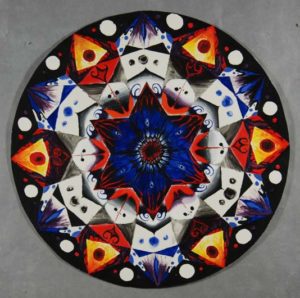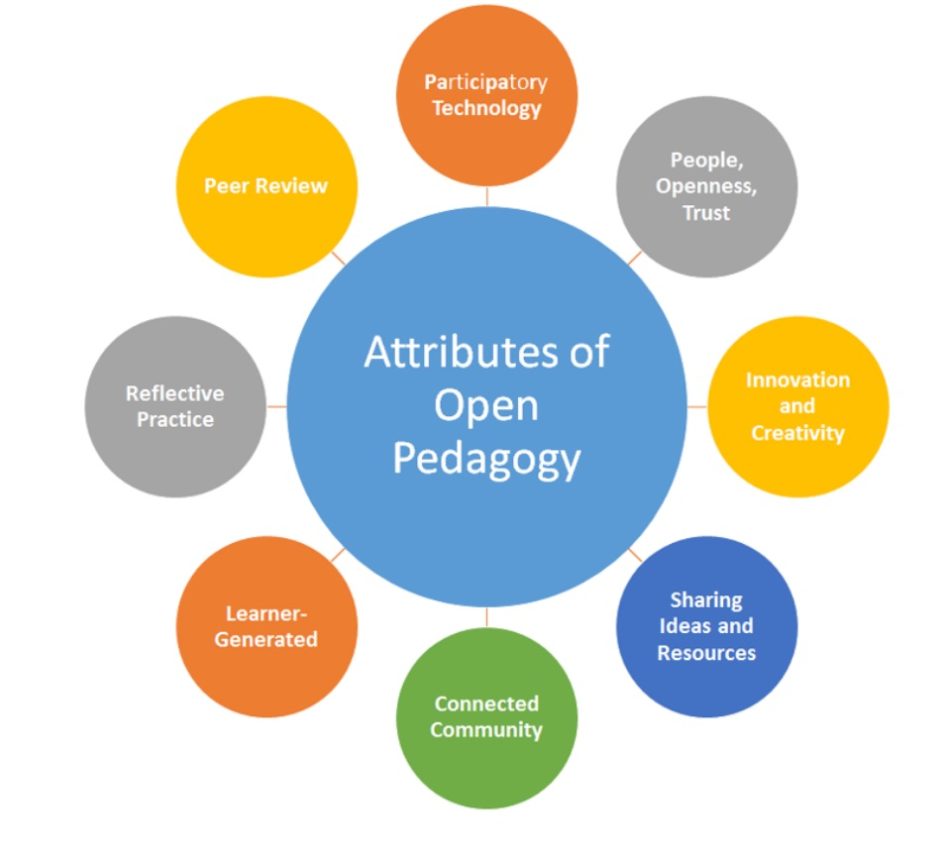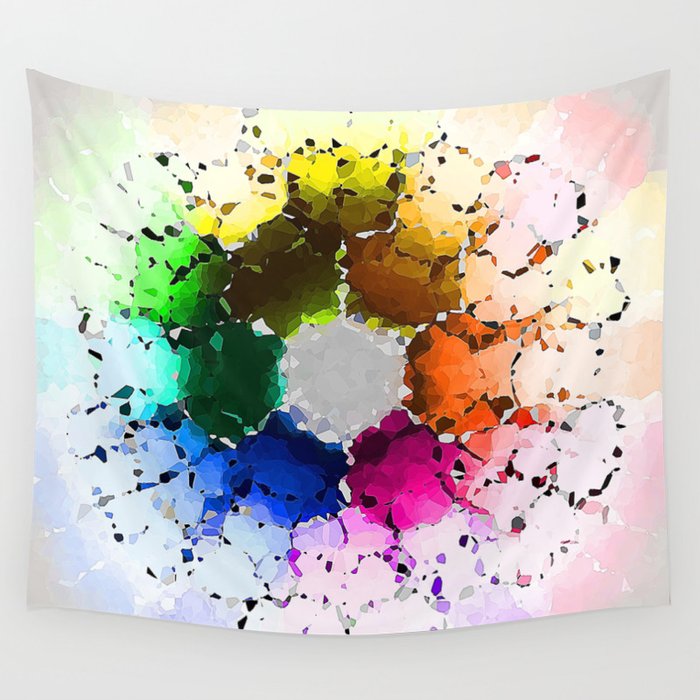Figure 11.4.2 Hegarty’s Attributes of Open Pedagogy. Image: Hegarty, 2015
Overview of Open Pedagogy:
What is Open Pedagogy?
Open Pedagogy is all about student participation, as well as the using/creating of Open Educational Resources (OER). Education is not treated like a constant, but an evolution that progresses over time with input and experience from student participation. Unlike many other forms of learning which are about the act of receiving knowledge, open pedagogy is all about the creation of knowledge through direct participation and experimentation so that students can leave behind something meaningful for the students that follow. With an Open Pedagogy teachers are inviting the students to be directly involved in the teaching process, therefore the success of an Open Pedagogy System is based not on what the teacher teaches, but on what their students do. I particularly enjoy how Open Pedagogy is summarized in this quote from the University of Texas Arlington Libraries:
“Open pedagogy is the practice of engaging with students as creators of information rather than simply consumers of it. It’s a form of experiential learning in which students demonstrate understanding through the act of creation. The products of open pedagogy are student created and openly licensed so that they may live outside of the classroom in a way that has an impact on the greater community. Open projects frequently result in the creation of open educational resources (OER). OER are free teaching and learning materials that are licensed to allow for revision and reuse. They can be fully self-contained textbooks, videos, quizzes, learning modules, and more.”
What I take from their definition is that the heart of an open pedagogy’s success is based around active student participation and exploration. This is an especially promising concept when studies like Constructive Alignment suggest that requiring students to learn what you want them to from a course requires removing possible shortcuts such as cram studies.
Hegarty (2015) separated different aspects of a working Open Pedagogy into a web-like formula, which I have included above for reference. These categories may overlap frequently, but they form the basis of what is required to produce student OERs. OERs from what I can find, most often come in the form of opensource textbooks or blogs.
Open Pedagogy in Visual Arts:
There are a lot of similar concepts between Open Pedagogy and Visual Arts, so much so that I almost wonder if teaching studio art classes in and of itself is a type of Open Pedagogy by default. Teachers may brief you on a concept in visual arts, but the learning falls entirely upon student participation, exploration, and contribution. Schools may also ask students to leave their works behind as examples for other students, or ask them to engage in large-scale projects that leave a lasting impact on the school when completed. Additionally, artworks from classes are often hosted in school gallery events, and so project studies can even be used to reach out to non-art students. Along with learning art, Visual arts offers students unique experiences where participation and exploration are not just suggested, but required by default in order to progress. Students may learn many community-based skills in Visual Arts, like the exchange of tips and tricks, techniques, sharing art supplies/resources, dynamic engagement with difficult topics, and of course an entirely creative-based approach to learning.
One of my favorite examples of Open Pedagogy in Visual Arts is the “Color Wheel Assignment”, which seems to be so beloved by art instructors that students usually have to relive it over and over at the start of almost every art course. It goes like this:

Abstracted Color-Wheel by Jessica Coleman
-First the instructor explains how a color wheel works, they show a visual example of the basic color wheel, and cover color theory such as harmony, complimentary, and monochrome palettes.
-Second comes an assignment: to make the color wheel exactly as the instructor showed. This is usually an ungraded exercise to let students discover color mixing and become familiar with the color wheel. By making students make their own accurate color wheels, they increase student understanding beyond simply giving them a picture and description of a color wheel.
-Next is the graded phase. Teachers ask students to recreate the color wheel, by engaging the wheel and color theory creatively in order to create something new, students are then forced to apply their knowledge. During this process students are asked to watch what their peers do, engage with each other to brainstorm, and draw inspiration. The wheel more often than not becomes heavily abstracted, the shape changes, the colors melt, and in the process of abstract thinking students are left with a tangible result they can share and discuss with others. The projects are then usually hung up on a wall where they can be referenced later throughout the remainder of the course, and be seen by other art classes in the same room throughout the year.
-Finally, students are required to critique and discuss their peers creations as a class. They tell the student what they did well, what they did not do well, how they could have pushed it further, and what they succeeding in accomplishing with their own color wheels in reflection.
I believe this is a good example of Open Pedagogy in Visual Arts because it taps on all the attributes in Hegarty’s web. Students are given information and as a class are tasked not just with understanding the content, but with pushing it and each other further.
Uses of Open Pedagogy in the Learning Resource:
I believe Open Pedagogy will be an integral part of my groups learning resource. As I previously stated a lot of art courses already operate as an Open Pedagogy. I believe it would actually be harder to make a studio-based art resource that didn’t use elements of Open Pedagogy.
My groups learning resource will be about art group projects leading up to making a school mini-mural. This mural would then be owned and displayed by the hypothetical school for generations to come. A project like this requires a lot if not all of the key defining factors of open pedagogy, especially if the mural is used to express a statement or social issue the students want to comment on. This sort of learning would heavily rely on Peer-based review, community building, trust, innovation, and participation/collaboration. The art would then be displayed in a way that it can be seen by peers and influence/build upon future student experiences, opinions and studies. Students would be responsible for their own learning of their chosen topic, and the role of the teacher would be to provide them with the tools and resources they need to achieve their desired goals, rather than providing them with very specific pre-planned information.
In conclusion, I believe Open Pedagogy systems are extremely important for visual arts courses and look forward to adding these elements to the blueprint.
References:
“What is Open Pedagogy?” by BCCampus: OpenED
“Chapter 11.4 Open Pedagogy” by TonyBates.ca &
The University of Texas Arlington Libraries


December 7, 2020 at 6:00 pm
Best view i have ever seen !